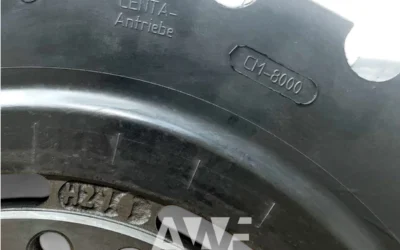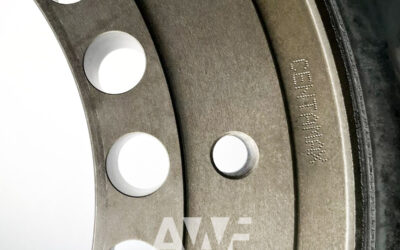Read Article
Read Article
Discussion –
Centaflex Original vs. Copies – What to Look For and Why It Matters
Not all coupling elements are created equal. If you’re replacing a worn Centaflex A element, be warned: non-original copies can damage your machine and cost you far more than you save.
✅ Centa Applies a Protective Coating
Original Centaflex A elements may appear dusty or grayish—this is intentional. CENTA applies a UV-resistant surface coating to protect the rubber during storage.
Aftermarket copies often skip this step, leaving rubber exposed and vulnerable to premature aging.
📆 OEM Elements Have a Production Date – Copies usually don’t
Every genuine CENTA element is marked with its production date. This helps:
- Ensure you install fresh rubber
- Track aging and stiffness shifts
- Document lifecycle for service plans
Replicas have no date marking—you don’t know if it sat on a shelf for 6 months or 6 years.
⚠️ Shore Hardness Drift: An Invisible Risk
Rubber naturally hardens over time. As Shore hardness increases:
- The element stiffens
- Damping decreases
- Vibration risk rises
Used or old stock from unknown sources can be functionally unsafe, even if it “looks new.”
How to Spot a Fake, Used, or Non-OEM Centaflex A Coupling
Genuine CENTA elements come with specific physical indicators of authenticity. Here’s what to look for when verifying a Centaflex A coupling element:
✅ Signs of a Genuine OEM CENTA Element:
- Embossed “Centaflex” branding on the rubber – confirms it’s not a replica
- Production date is molded or printed directly on the rubber body
- CENTA patent markings such as:
→ D.B.P. – 2019608
→ JAP.Pat. – 778322 - May be delivered with or without surface coating
o Some OEM elements are instead packed in UV-resistant plastic bags, especially for shelf storage
❌ Warning Signs of a Copy or Previously Used Element:
- No production date = Unknown age and origin
- Missing “Centaflex” branding = Not a CENTA product
- No UV protection or bag = Risk of pre-aging in storage
- Visible tightening marks or bolt indentations = Possibly used
- No patent numbers or mismatched fonts = Suspicious source
💡 Important: Just because a part looks clean or unused doesn’t mean it’s new or original. Always check for branding, dates, and markings.
OEM elements come with clear specs, markings, and traceability. Copies don’t.
💡 Summary: Why OEM Wins
| OEM | Copy |
|---|---|
| Exact Shore hardness | Approximate or generic Shore |
| UV protection | None |
| Production date | None |
| Designed with OEM | No TVA validation |
| Consistent performance | High failure risk |
⚠️ The cost of breakdowns and downtime far exceeds the savings from a replica.
📩 Want help verifying a part or confirming authenticity?
Contact us at AWELASTIC.com — we supply only new, original CENTAFLEX A elements.
You May Also Like
Understanding CENTAMAX Coupling Types – SB, SBE, SC, and SCE
Read ArticleRead ArticleDiscussion - CENTAMAX couplings are manufactured in several fitment types to suit different...
Why OEM Centamax Couplings Outperform Copies in Large Gensets
Read ArticleRead ArticleDiscussion - In high-output marine generators, gas power units, locomotives, and heavy...
Common Failure Causes in BoWex® FLE-PA Couplings – What to Watch For and How to Avoid Downtime
Read ArticleRead ArticleDiscussion - When your engine-to-pump connection fails, the coupling is often the first...






